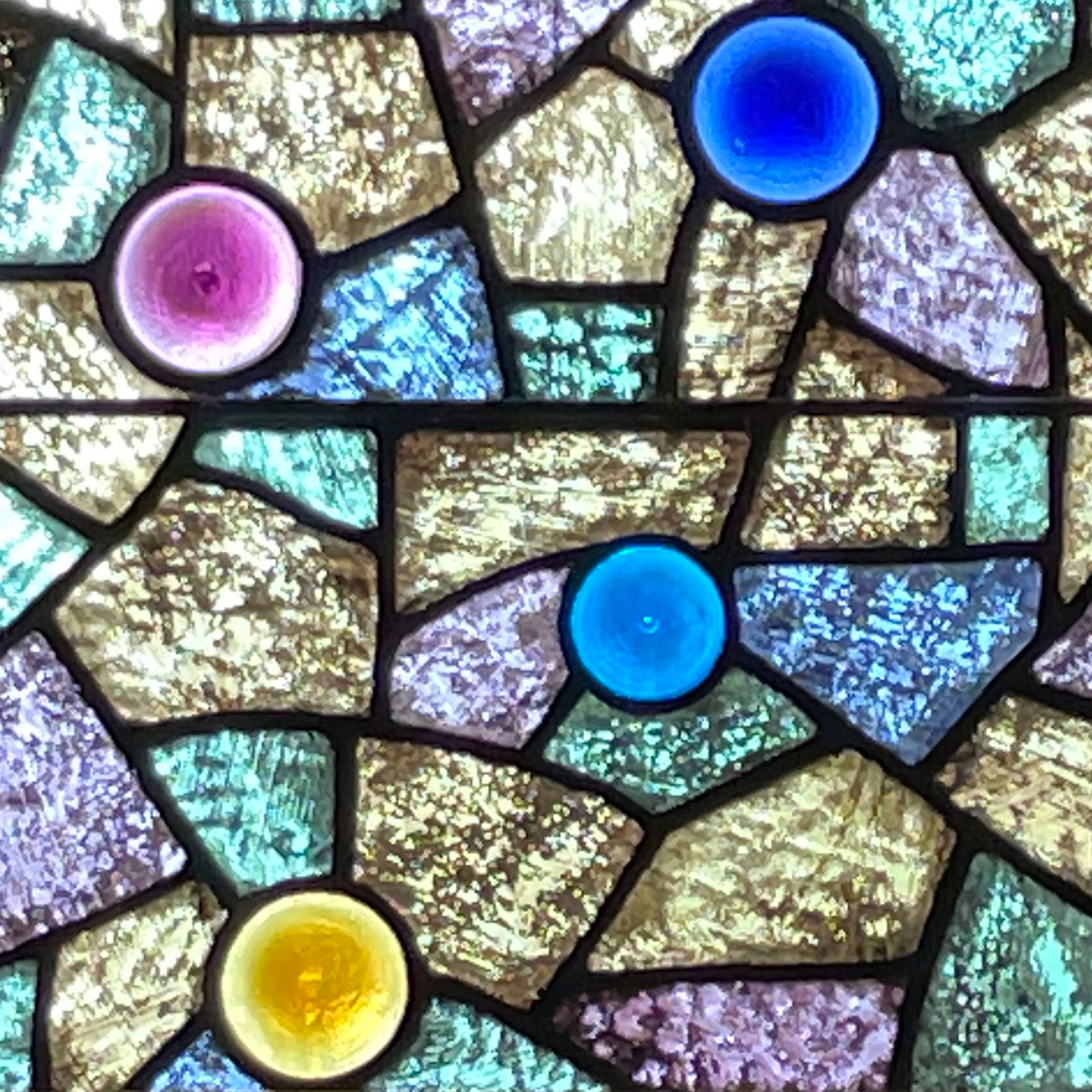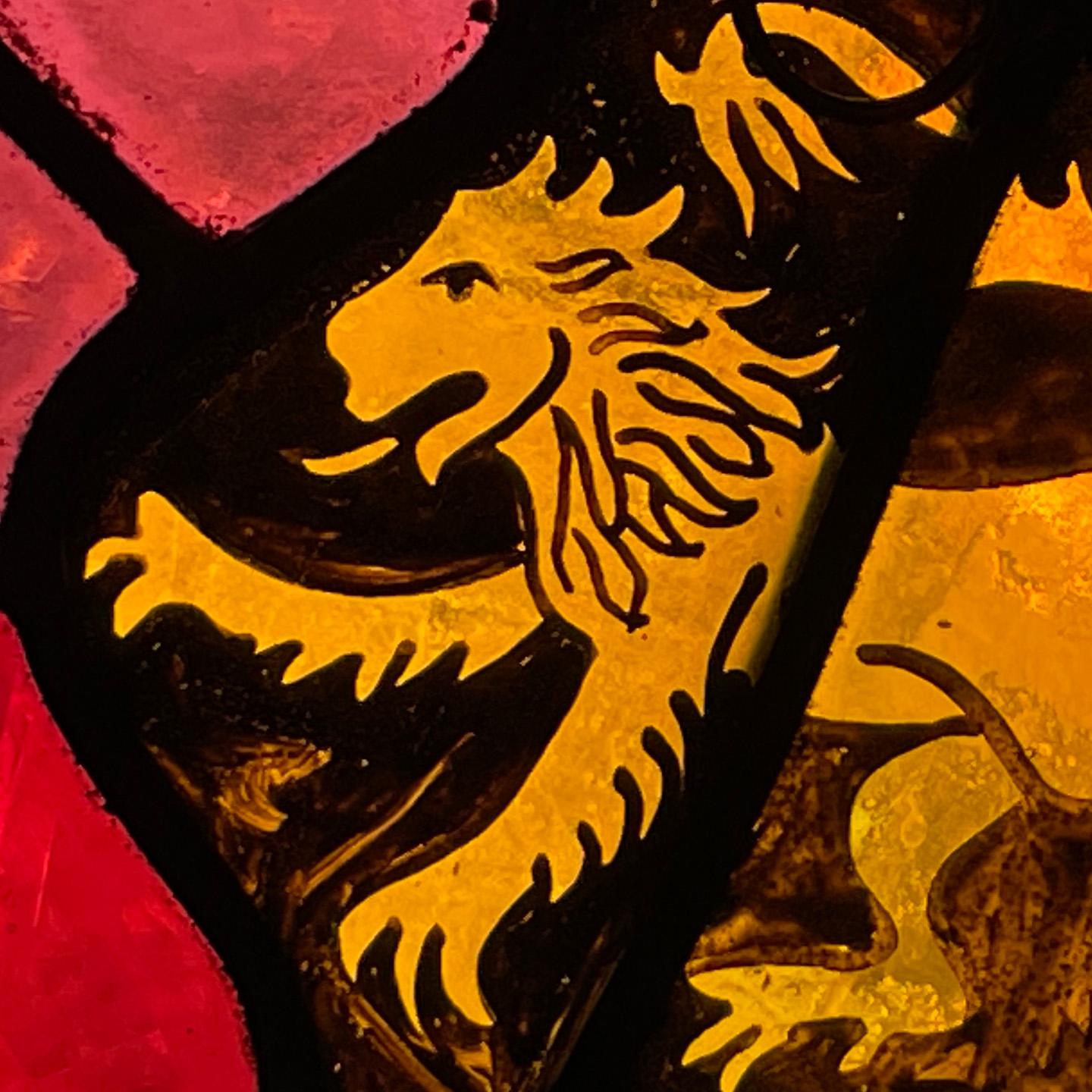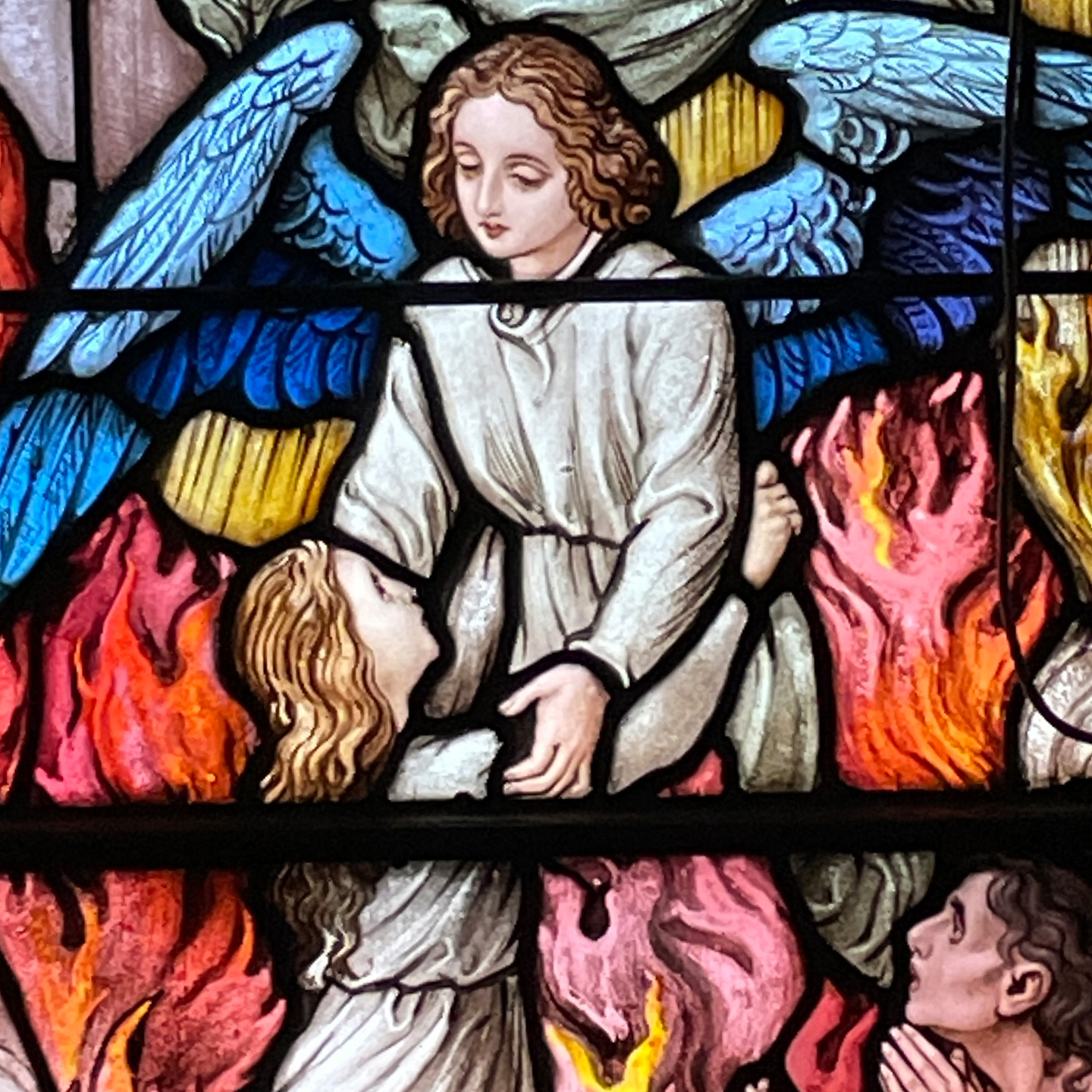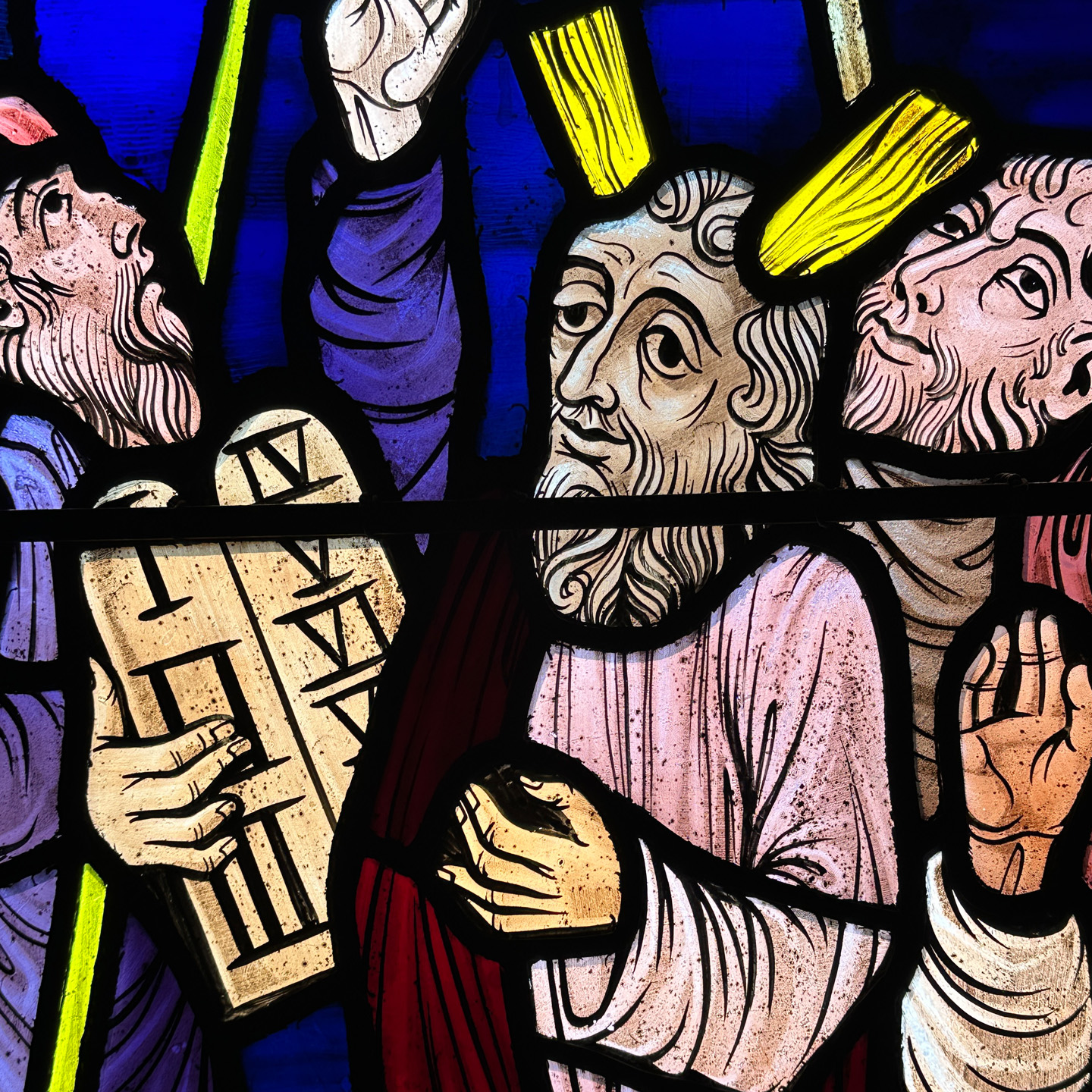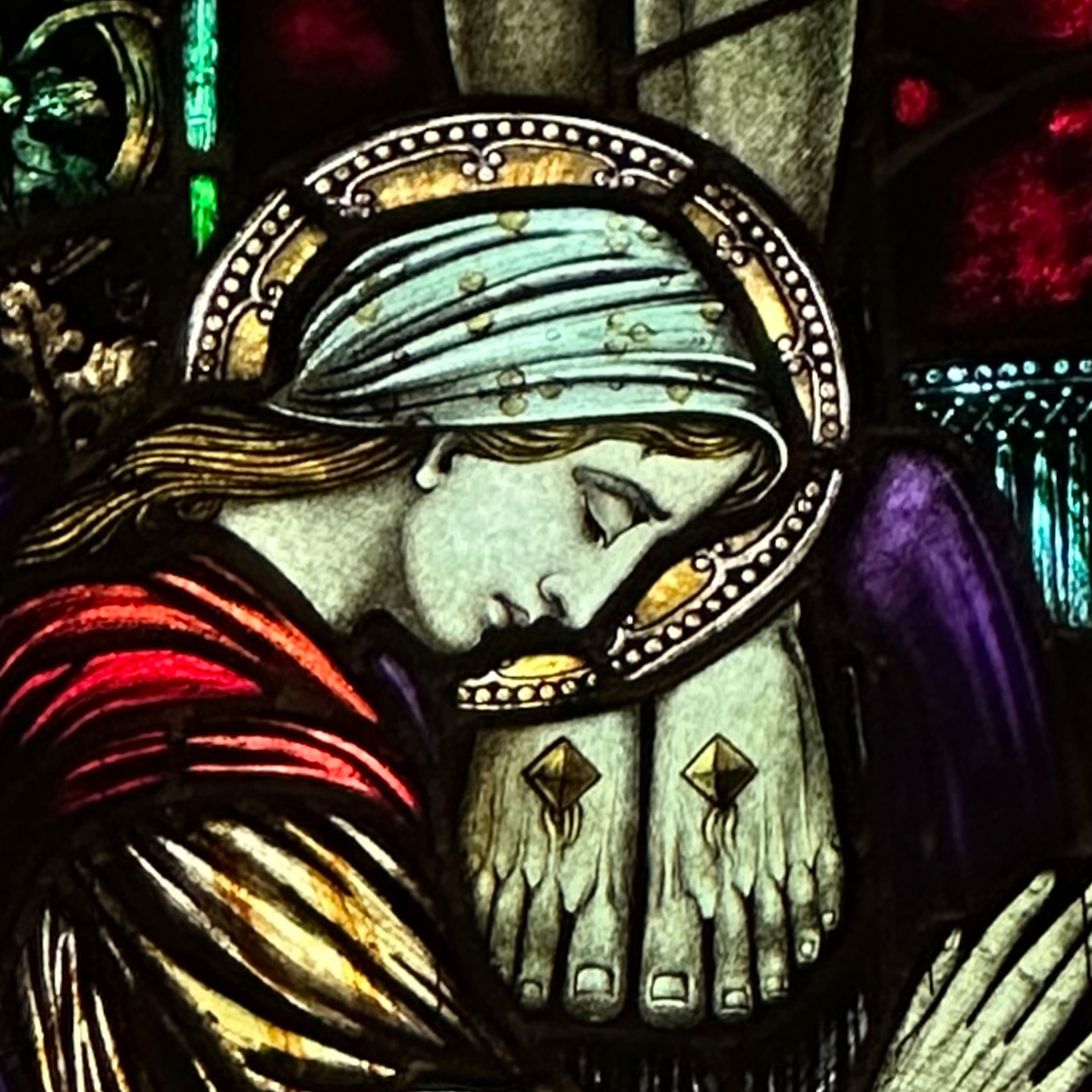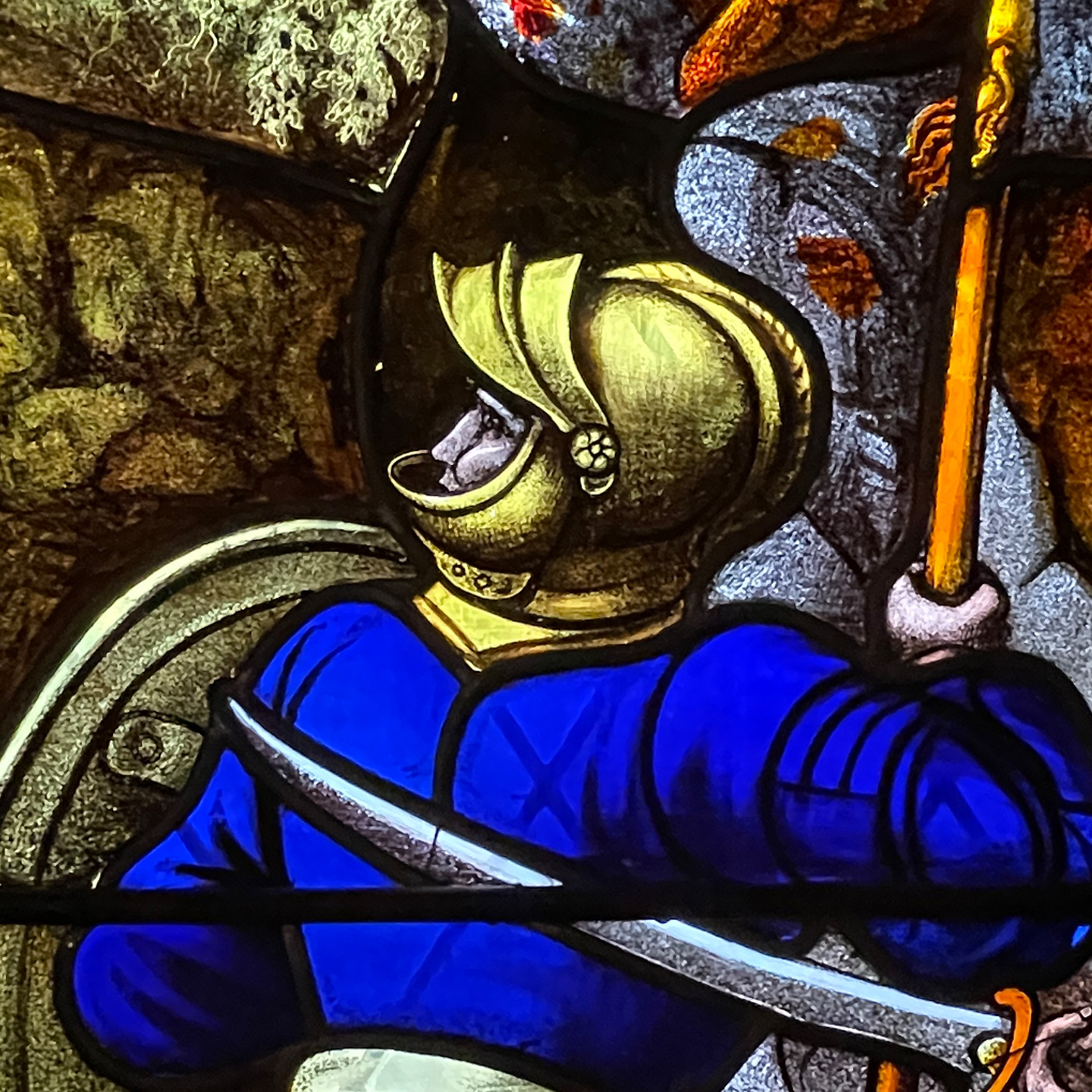
In Annunciation artworks, three lilies often symbolize the purity of the Virgin Mary and her role as the spotless vessel chosen to bear Christ. The number three reflects the Holy Trinity, underscoring the divine presence and the sacred mystery of the Incarnation. Together, the lilies serve as both a sign of Mary’s chastity and a visual reminder of God’s eternal plan.
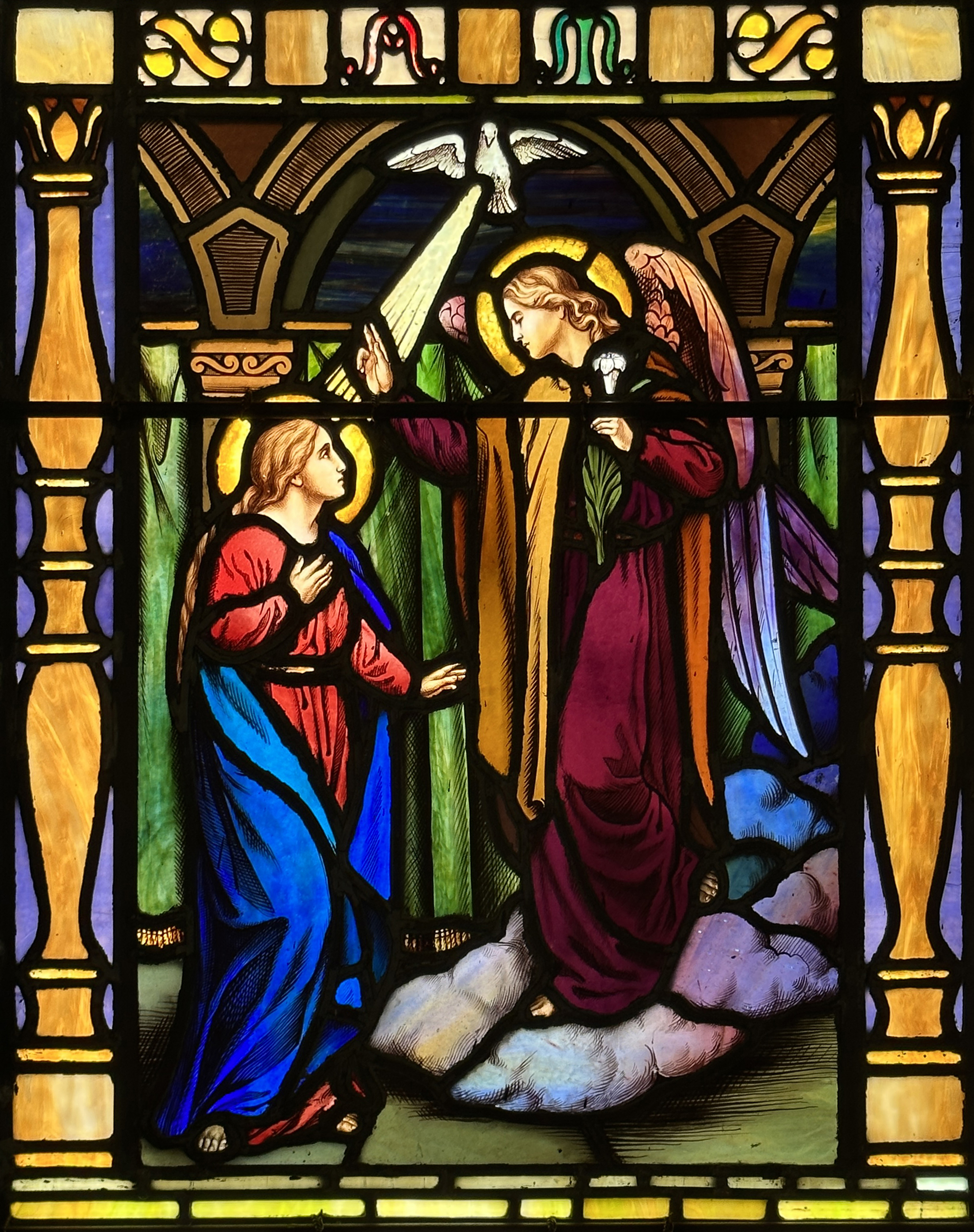
In Annunciation art, rays of light often symbolize the divine presence of God breaking into the earthly realm. These beams typically descend toward Mary, representing the Holy Spirit’s role in the Incarnation. Their golden brilliance conveys purity, grace, and the sacred moment of heaven touching humanity.

The Virgin Mary is often depicted wearing blue because the color symbolizes purity, heaven, and her role as the Queen of Heaven. In medieval times, blue pigment was rare and costly, making it a sign of honor and reverence. Artists used this rich color to emphasize her sacred importance and her closeness to the divine.

In Annunciation art, the dove symbolizes the Holy Spirit descending from heaven to bring divine presence into the moment. It represents purity, peace, and the sacred act of God’s Word becoming flesh through Mary. Often shown with rays of light, the dove emphasizes the mystery of divine intervention and the gift of new life.
